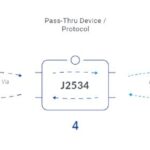For car owners and enthusiasts alike, the appearance of a check engine light can be unsettling. When this light illuminates, it signifies that your vehicle’s onboard diagnostic system has detected an issue. Diagnostic Trouble Codes (DTCs) are generated to pinpoint these problems, and many people turn to OBD2 scanners hoping for a quick fix by clearing these codes. But does an OBD2 scanner truly clear all codes, and what are the nuances behind DTC clearing? Let’s delve into the different types of DTCs and understand the capabilities and limitations of OBD2 scanners in resetting them.
Understanding Diagnostic Trouble Codes (DTCs)
Not all DTCs are created equal. They fall into different categories, each with its own behavior when it comes to clearing and the role an OBD2 scanner plays. Understanding these distinctions is crucial for effective vehicle maintenance.
Permanent DTCs: The Unclearable Codes
Permanent Diagnostic Trouble Codes (PDTCs) are designed to ensure that vehicle emissions systems are properly repaired. As highlighted by the Bureau of Automotive Repair (BAR), PDTCs are fundamentally different from regular DTCs. Simply disconnecting your car battery or using a standard OBD2 scanner will not erase them.
The only way to clear a PDTC is to address the root cause of the problem that triggered the code in the first place. Once the issue is resolved, the vehicle needs to be driven sufficiently to allow the relevant monitoring system to run and confirm the repair. If the monitor runs successfully without detecting the fault again, the PDTC will clear itself automatically. Therefore, while an OBD2 scanner can read PDTCs, it cannot directly clear them, emphasizing that these codes are in place to guarantee proper vehicle repairs, especially concerning emissions.
Pending DTCs: Waiting in the Wings
Pending codes, also known as intermittent codes, represent potential issues that the vehicle’s computer has detected but hasn’t yet confirmed as a hard fault. These codes arise from either temporary malfunctions or issues that need to be observed over two consecutive warm-up cycles to become a confirmed DTC.
If the problem that caused a pending code does not reappear within 40 warm-up cycles, the code will be automatically cleared from the system’s memory. However, if the fault recurs within a specific number of warm-up cycles, the pending code will mature into a regular DTC, and this will typically activate the check engine light, signaling a confirmed issue that needs attention. OBD2 scanners can read and often clear pending codes, allowing you to monitor if a potential issue has been resolved or if it escalates into a more serious problem.
History DTCs: Records of Past Issues
History codes are records of past DTCs that were once active and triggered the check engine light, but have since been resolved or are no longer actively detected. Think of them as a historical log of your vehicle’s diagnostic events.
Clearing history codes is more variable than clearing pending or even regular DTCs (non-permanent). Some history codes can be cleared using an OBD2 scan tool with a simple code clearing function. However, others might require a more specific or repeated clearing process, sometimes referred to as a double code clearing. Certain history codes are designed to persist for a set number of ignition cycles or drive cycles, and will only clear once specific driving conditions are met and the system confirms the issue is no longer present. These codes are archived to assist in diagnosing intermittent problems, providing technicians with a history of past faults that might not be currently active. For history codes that are resistant to standard clearing methods, consulting the vehicle’s service manual for the specific code is essential. The manual will outline any specific conditions or procedures required for clearing that particular history code, which might involve specific driving patterns to allow the system to re-evaluate and clear the code.
Conclusion
In summary, while OBD2 scanners are valuable tools for reading and clearing many types of diagnostic trouble codes, they are not a universal solution for all DTCs. Specifically, Permanent DTCs cannot be cleared by OBD2 scanners and require a proper repair of the underlying issue. Pending and History DTCs often can be cleared by OBD2 scanners, but understanding the nature of each code and sometimes consulting service manuals is crucial for effective vehicle maintenance and ensuring that your vehicle is running optimally and efficiently. Using an OBD2 scanner can be a helpful first step in addressing check engine lights, but it’s important to recognize their limitations, especially with permanent codes, and to prioritize addressing the root cause of any persistent issues.
